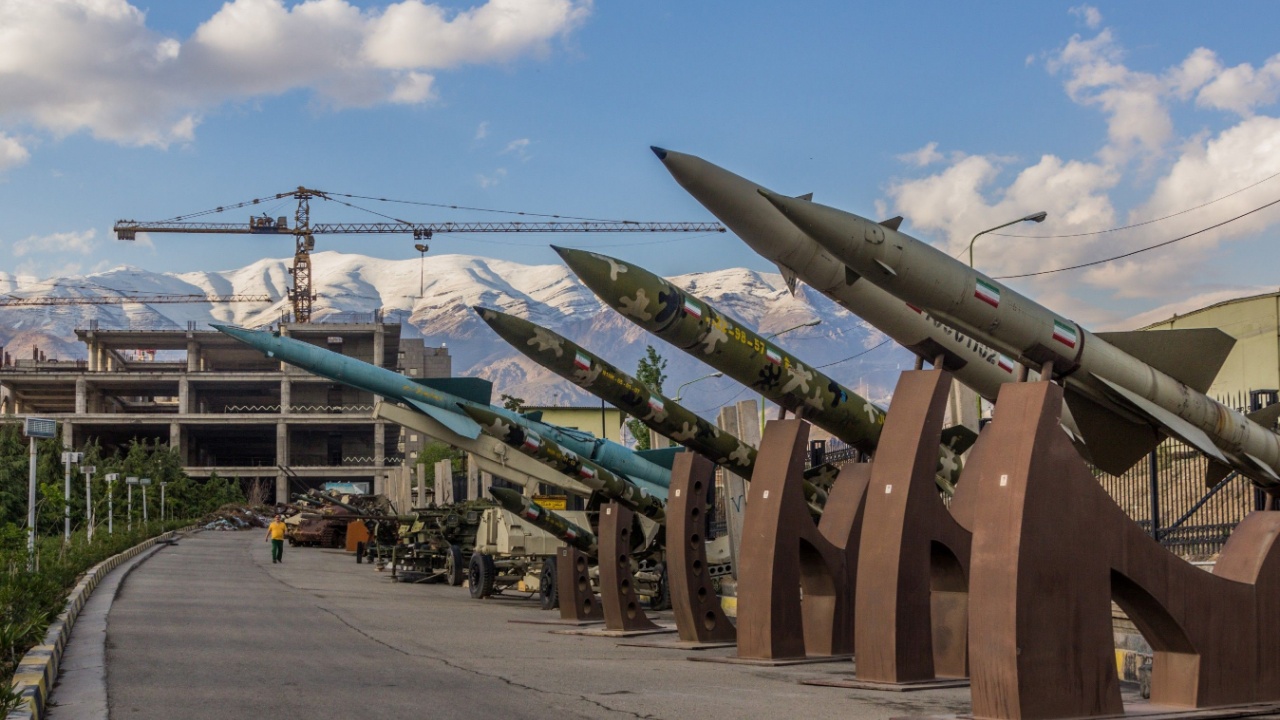Iran Making Progress With its 'Drone Aircraft Carrier'
Iran's Islamic Revolutionary Guard Corps (IRGC) is making strides in naval capabilities with the development of the IRGC Shahid Bagheri, an "aircraft carrier" converted from a commercial container ship.
Summary and Key Points: Iran's Islamic Revolutionary Guard Corps (IRGC) is making strides in naval capabilities with the development of the IRGC Shahid Bagheri, an "aircraft carrier" converted from a commercial container ship.
-While it can't match a U.S. Nimitz-class carrier, it's designed to launch domestically produced drones, featuring an angled flight deck and a ski jump ramp.
-Despite its limitations, such as a narrow flight deck and lack of a protective strike group, the Shahid Bagheri represents a significant step in Iran's efforts to project power and build a blue-water navy. A second similar vessel, IRGC Shahid Mahdavi, is also in development.
IRGC’s Shahid Bagheri: Iran’s Innovative Take on Aircraft Carriers
Images circulated online last week showing Iran's progress on building an "aircraft carrier" of sorts. By no means could the Islamic Revolutionary Guard Corps’ IRGC Shahid Bagheri go head-to-head with a U.S. Navy Nimitz-class carrier, but that's not really its point.
Built from a commercial container ship, this is Tehran's attempt to build a carrier quickly and without spending billions of dollars. It will be employed to launch Iran's domestically produced unmanned aerial systems – the Middle Eastern nation has made a lot of progress on its drones in recent years. The latest images revealed that Shahid Bagheri has a nearly complete angled flight deck with a ski jump ramp similar to the ones employed on the Royal Navy's Queen Elizabeth-class carriers and on Russia's flagship flattop Admiral Kuznetsov.
The conversion from a container ship may limit some of the carrier’s capabilities, including its ability to launch and recover aircraft.
"The fact that the Shahid Bagheri retains the original superstructure, which spans the entire width of the deck, means that a conventional flattop configuration cannot be adopted,” The War Zone reported. “Instead, an angled flight deck provides the requisite runway length, presumably for launch and recovery. Adding the angled deck, which extends all the way to the bow ramp, involves the construction of a prominent overhang or flare on the left-hand side of the vessel.”

Likewise, observers have noted that the flight deck is still quite narrow, which could make it challenging to recover large drones. During landing operations, it may be necessary to employ arrestor cables or other barriers to keep the recovered drones from entering the landing area.
Yet it should be remembered that just a century ago, the U.S. Navy's first aircraft carrier, USS Langley (CV-1), began service as USS Jupiter, a collier that was converted to a flattop and then served as a testbed for naval aviation. Though hardly a capable aircraft carrier, IRGC Shahid Bagheri could greatly extend the reach of Tehran's IRGC.
There are now plans to convert a second container ship into a "forward base ship" for drone operations. It is unclear how much progress has been made on the future IRGC Shahid Mahdavi.
Iran Lacks the Strike Group
Though these warships highlight the great strides Tehran has made, Iran will still be limited in their use. Though it is possible that Shahid Bagheri could be sent on a mission to some distant port in an effort to project power, the fact remains that carriers don't travel the world unescorted today.
"A key weakness of Iran's new carriers remains the country’s lack of modern surface combat ships such as frigates or destroyers, which leaves them potentially highly vulnerable to air and missile strikes by adversaries. Other navies such as China and the United States rely on destroyers to protect their carriers with multi-layered air defenses," Military Watch magazine reported.
But like China's moves to kickstart its carrier program a decade ago, this is just the beginning of Tehran's efforts to build a blue-water navy.
Author Experience and Expertise: Peter Suciu
Peter Suciu is a Michigan-based writer. He has contributed to more than four dozen magazines, newspapers, and websites with over 3,200 published pieces over a twenty-year career in journalism. He regularly writes about military hardware, firearms history, cybersecurity, politics, and international affairs. Peter is also a Contributing Writer for Forbes and Clearance Jobs. You can follow him on Twitter: @PeterSuciu. You can email the author: [email protected].
Main Image Credit: X Screenshot. Intext Image: Shutterstock.


